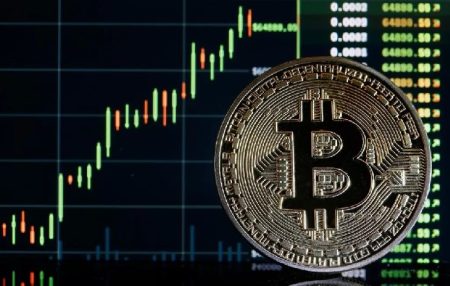DEX Bubble Set to Burst: BitMEX CEO Warns Current Leaders May Not Survive to 2025
The Fragility Behind Decentralized Exchange Dominance
In the rapidly evolving landscape of cryptocurrency trading, today’s headline-grabbing decentralized exchanges might be tomorrow’s forgotten platforms. During an exclusive interview with CoinDesk at Token2049 in Singapore, BitMEX CEO Stephan Lutz delivered a sobering assessment of the current DEX phenomenon, suggesting that market leaders like Hyperliquid and Aster may not maintain their dominance by next year’s conference. According to Lutz, the fundamental issue lies in their business models, which rely heavily on unsustainable incentive programs that create artificial momentum rather than genuine value.
“DEXs are about giving access to markets without intermediaries, and they build momentum by relying heavily on incentives. It’s basically an inherent pump-and-dump scheme,” Lutz explained. “I don’t mean that in a bad way or as a scam. It’s all public, you know what you’re getting into.” This candid characterization comes amid an intensifying battle in the perpetual decentralized exchange sector, where platforms like Aster and Lighter have recently challenged Hyperliquid’s former market dominance. Just last week, Aster surpassed Hyperliquid in 24-hour trading volume, signaling a significant shift in market dynamics and triggering what appears to be a gold rush among competitors launching new platforms.
The timing of Lutz’s warning is particularly noteworthy, as prominent industry figure Justin Sun announced the launch of yet another DEX at Token2049, further crowding an already competitive landscape. Lutz likened the current incentive-driven strategies to aggressive advertising campaigns that pay for attention rather than build sustainable ecosystems. “The question is, what sticks?” he pondered, suggesting that beneath the surface of impressive trading volumes and flashy token rewards lies a fragile foundation that cannot support long-term success. This boom-and-bust cycle not only threatens the longevity of these platforms but also exposes retail traders chasing outsized yields to considerable volatility and risk.
Centralized Exchanges Positioned for Long-Term Dominance
While decentralized exchanges continue to capture headlines and attract significant attention within the cryptocurrency community, Lutz believes that the largest centralized exchanges are strategically positioned to weather these market fluctuations and maintain their dominant positions. Led by industry giants like Coinbase, these established platforms offer institutional-grade infrastructure and regulatory compliance that DeFi protocols currently cannot match. According to Lutz, this fundamental difference gives centralized exchanges a significant advantage that will persist long after the latest DEX incentive programs have subsided.
BitMEX itself is adopting a hybrid approach, attempting to bridge both worlds while recognizing the unique strengths of each model. “While I see DeFi enduring and embrace it personally as a crypto native, institutions simply can’t interact with it like they can with a centralized exchange,” Lutz noted. This pragmatic stance acknowledges both the innovative potential of decentralized finance and the practical limitations that continue to restrict its adoption among larger financial institutions. The balancing act represents BitMEX’s strategy to remain relevant in a rapidly evolving market where both centralized and decentralized models coexist, each serving different segments of the trading community.
This perspective comes from an executive who has witnessed multiple market cycles and has guided BitMEX through significant transitions. Rather than dismissing decentralized exchanges entirely, Lutz’s analysis suggests a more nuanced view: while the current iteration of incentive-driven DEXs may prove unsustainable, the underlying technology and core value proposition of decentralized trading may continue to evolve and find more sustainable expressions in the future. The challenge for current platforms lies in transitioning from artificial growth mechanisms to genuine value creation that can attract and retain users without relying on token incentives.
BitMEX’s Strategic Pivot to Tokyo Yields Impressive Results
In a significant strategic move that underscores the importance of physical infrastructure in digital asset trading, BitMEX recently relocated its data infrastructure from AWS Dublin to AWS Tokyo. According to Lutz, this geographical shift was driven by a simple yet crucial observation: “The Japanese capital, not Hong Kong or Singapore, is where the trading volume is.” The August transition has already delivered impressive results, with the exchange reporting approximately 80% increased liquidity in its main contracts and up to a remarkable 400% improvement in some altcoin markets.
What makes these figures particularly noteworthy is that they weren’t achieved through artificial market-making interventions but simply by reducing latency through strategic positioning. “We were in Ireland before… but it became more and more difficult because basically everyone except the U.S. players are in the Tokyo data centers,” Lutz explained. This insight highlights a critical aspect of cryptocurrency trading infrastructure that often goes undiscussed: despite the decentralized nature of blockchain technology, the physical location of servers and data centers continues to play a decisive role in market performance and user experience.
The successful Tokyo pivot represents a broader trend in the cryptocurrency exchange landscape, where technical optimizations and infrastructure investments are increasingly becoming key differentiators in a crowded market. While much of the industry discussion focuses on regulatory developments, token economics, and new product offerings, BitMEX’s experience demonstrates that fundamental infrastructure decisions can deliver immediate and substantial benefits. As competition among exchanges intensifies, these behind-the-scenes optimizations may prove as important as more visible features in determining which platforms ultimately succeed in capturing and retaining trading volume.
The Next Crypto Cycle: Evolution, Not Revolution
Looking beyond the current state of the market, Lutz offered a compelling vision of how the next cryptocurrency cycle might unfold, suggesting that we should expect evolution rather than revolution. With increased institutional participation and broader adoption, he predicts that Bitcoin could begin behaving more like a traditional “real asset,” with smoother price movements and less dramatic volatility than in previous cycles. “I expect that with greater adoption we’ll see longer plateau phases than in previous cycles; the market will still follow the same rules and characteristics, but with lower volatility as it becomes a real asset embraced by the world’s wealthy,” he stated.
This prediction is supported by observable trends in the market, particularly since the introduction of spot Bitcoin ETFs in the United States last year. Bitcoin’s implied volatility indices have gradually evolved into structures resembling the VIX (the traditional market’s “fear index”), typically moving in the opposite direction of spot prices. This maturation process represents a significant milestone in Bitcoin’s journey toward mainstream financial acceptance and suggests that the asset class is developing more sophisticated market mechanics aligned with established financial instruments.
The implications of this evolution extend beyond Bitcoin itself to the broader cryptocurrency ecosystem. While new decentralized exchanges may continue to emerge offering eye-watering leverage and aggressive incentive programs, Lutz believes these won’t fundamentally change Bitcoin’s trajectory toward becoming a more stable, institutionally-accepted asset class. Rather than the dramatic fireworks that characterized previous bull markets, Bitcoin may instead experience more gradual cycles of expansion and contraction, behaving increasingly like other sophisticated asset classes. This maturation process, while perhaps less exciting for speculators seeking extreme volatility, represents a necessary evolution if cryptocurrencies are to achieve their potential as a mainstream financial technology embraced by both retail and institutional investors worldwide.














